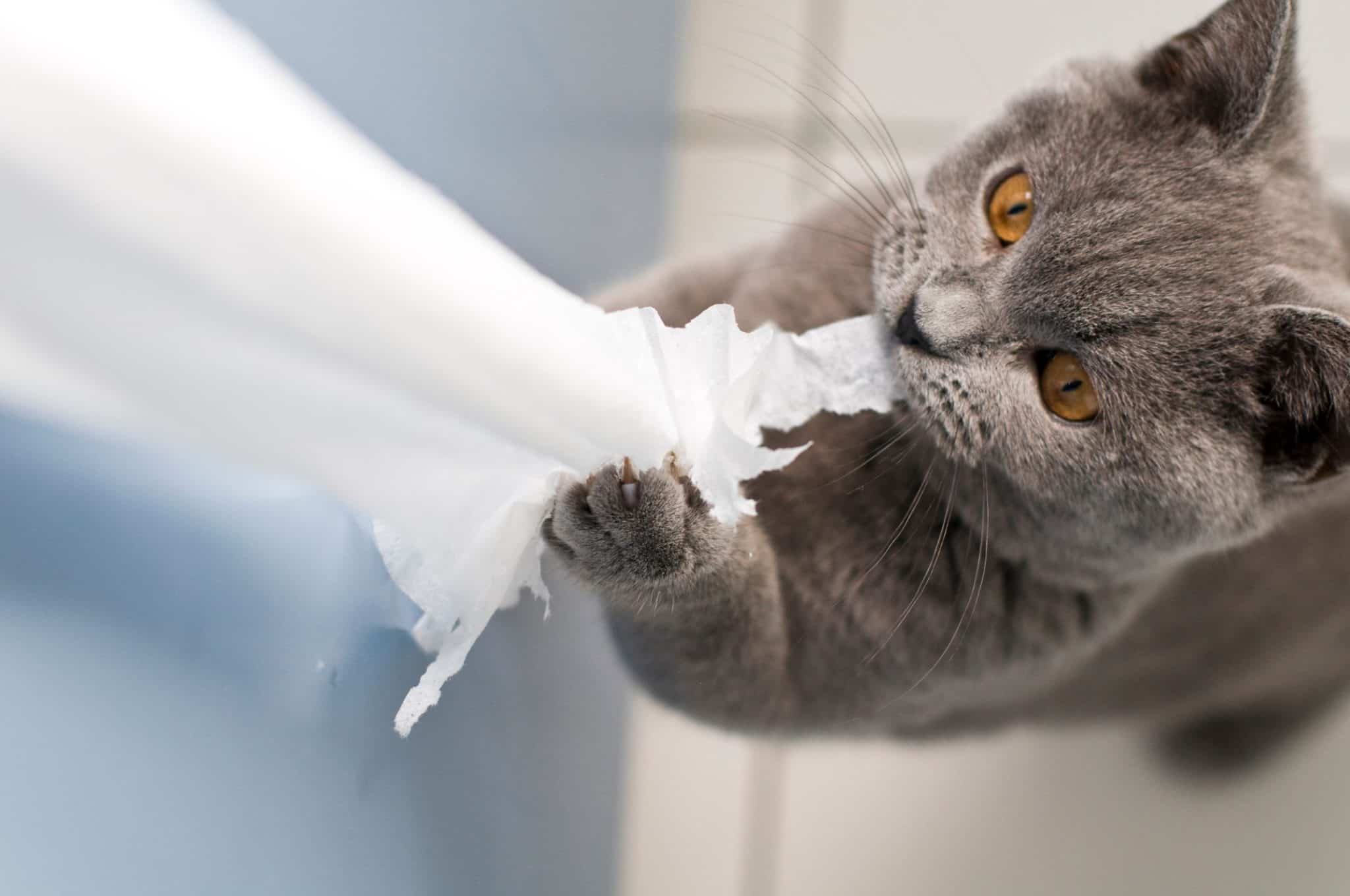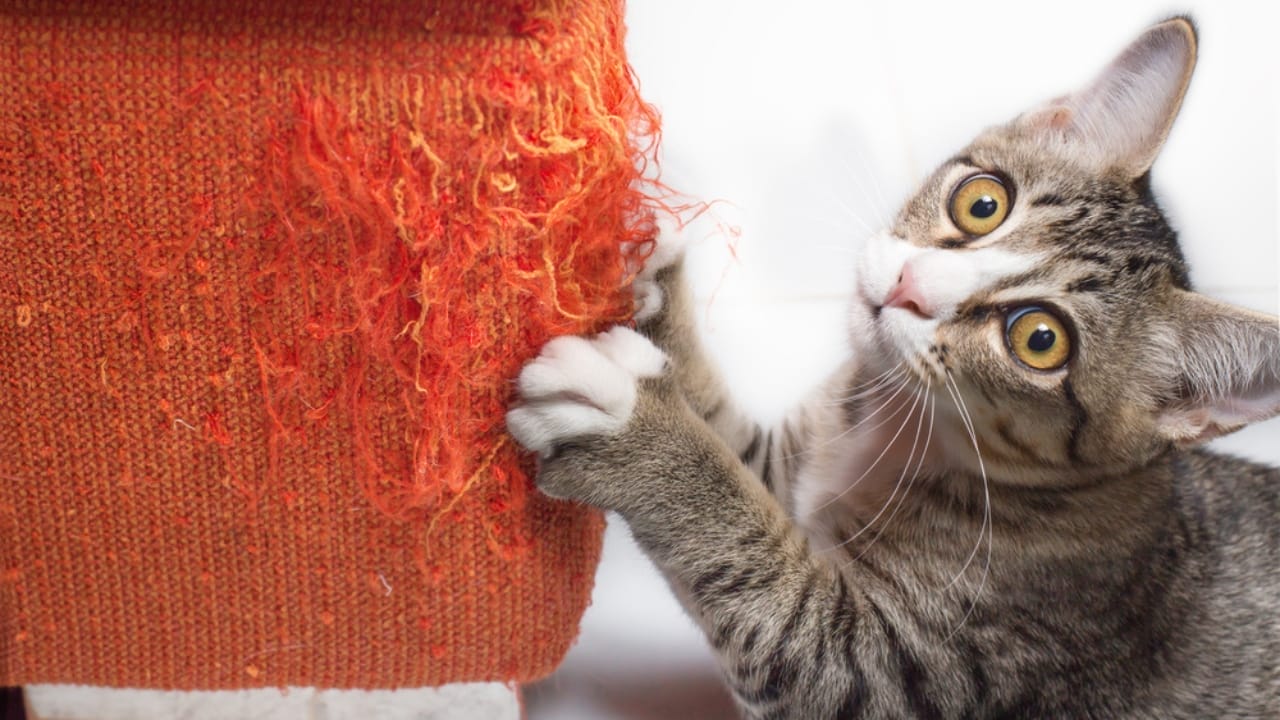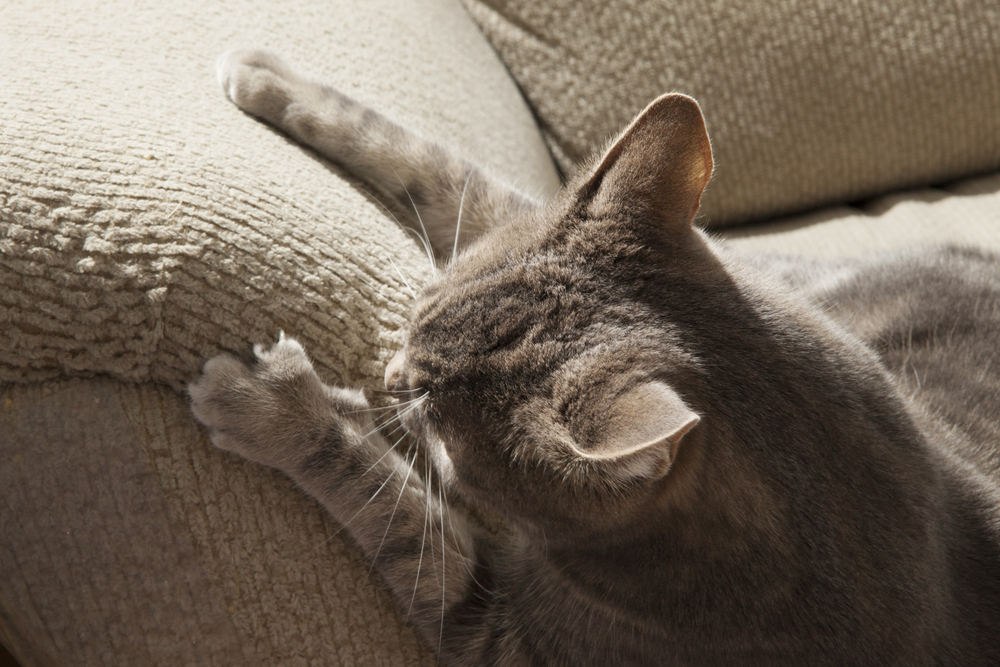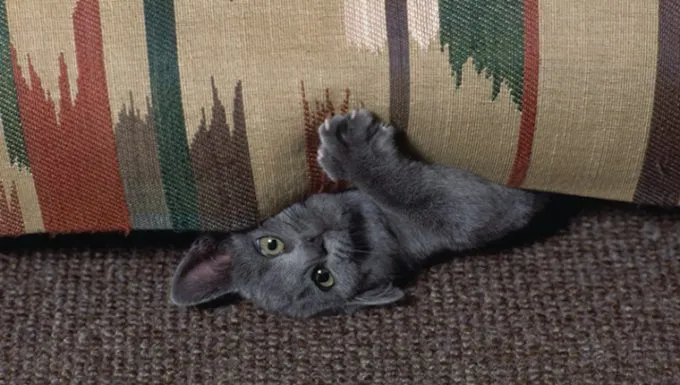Causes of Destructive Behavior in Cats
Underlying Medical Issues

Cats are known for their independence and self-reliance, but sometimes this can manifest in destructive behavior, causing concern and frustration for their owners. The causes of such behavior in cats can be varied and complex, often involving a combination of underlying medical issues, environmental factors, and psychological components.
Underlying Medical Issues: One of the primary causes of destructive behavior in cats is undiagnosed or untreated pain. Cats are masters at hiding their discomfort, but they may exhibit destructive behaviors such as scratching furniture or acting out in other ways to mask their pain. Arthritis, dental problems, and gastrointestinal issues can all contribute to chronic pain that may lead to destructive behavior.
Other medical conditions can also cause destructive behavior in cats. For example, neurological disorders like epilepsy, hyperthyroidism, and cognitive dysfunction can lead to abnormal behaviors such as aggression, self-mutilation, or repetitive behaviors.
Changes in Environment: Changes in a cat’s environment, such as moving to a new home, changes in the household, or adding new pets or family members, can cause stress and anxiety. This can manifest in destructive behavior such as scratching, spraying, or acting out in other ways.
Lack of Stimulation: Boredom and lack of stimulation can also contribute to destructive behavior in cats. If a cat is not provided with enough mental and physical stimulation, they may resort to destructive behaviors such as chewing, digging, or scratching furniture.
Learned Behavior: Cats can learn destructive behaviors from their environment, other pets, or even humans. For example, if a cat sees another pet or human exhibiting aggressive behavior towards an object, it may learn to associate that behavior with the object and start exhibiting similar behavior themselves.
Personality Traits: Some breeds of cats are more prone to destructive behavior than others due to their genetic makeup. Certain personality traits such as hyperactivity, impulsivity, and excitability can contribute to destructive behavior in cats.
Treatment Options: Addressing the underlying medical issues that may be contributing to destructive behavior is crucial for effective treatment. This may involve working with a veterinarian to diagnose and treat any underlying conditions, providing pain management, or modifying the cat’s environment to reduce stress and anxiety.
Behavioral modification techniques such as clicker training, pheromone therapy, and environmental enrichment can also be effective in reducing destructive behavior in cats. It is essential for owners to work with a veterinarian or animal behaviorist to develop an individualized treatment plan that addresses the specific needs of their cat.
Preventing Destructive Behavior: Preventing destructive behavior in cats requires providing them with a stimulating and comfortable environment, regular veterinary check-ups, and engaging in positive reinforcement training. By recognizing the underlying causes of destructive behavior and taking steps to address these issues, owners can reduce the likelihood of destructive behavior and promote a happy and healthy relationship with their cat.
Cat Anxiety and Stress
Cats are known for their independence and aloofness, but sometimes their behavior can be destructive and frustrating for their owners.
Understanding the causes of destructive behavior in cats is essential to addressing the problem and preventing it from happening in the first place.
The most common reasons that contribute to destructive behavior in cats include:
Boredom: Cats need mental and physical stimulation, and if they don’t receive enough, they can get bored and destructive.
Lack of Exercise: Just like humans, cats need regular exercise to stay healthy and happy. Without it, they can become restless and destructive.
Medical Issues: Cats in pain or discomfort due to medical issues can exhibit destructive behavior as a way of coping with their pain.
Changes in the Environment: Changes such as moving to a new home, introducing new pets or people, or changes in work schedules can cause stress and anxiety leading to destructive behavior.
Cat anxiety and stress are common underlying causes of destructive behavior. Some signs that may indicate your cat is experiencing anxiety or stress include:
Excessive meowing or crying: Cats often vocalize when they’re feeling anxious or stressed.
Destructive scratching: Cats will scratch furniture, carpets, and other surfaces to mark their territory and relieve stress.
Pacing back and forth: Cats will pace when they’re feeling anxious or restless.
Changes in appetite or sleep patterns: Changes in eating habits or sleeping patterns can indicate anxiety or stress.
If you suspect your cat is exhibiting destructive behavior due to anxiety or stress, there are several things you can try:
Provide a Safe Space: Create a quiet and comfortable space for your cat where they can retreat when feeling anxious or overwhelmed.
Exercise and Play: Engage in playtime with your cat to help burn off excess energy and reduce boredom and restlessness.
Manage Changes: Gradually introduce new pets, people, or changes in the environment to minimize stress and anxiety.
Mental Stimulation: Provide mental stimulation through puzzle toys and interactive games to keep your cat engaged and entertained.
Consult a Veterinarian or Animal Behaviorist: If your cat’s destructive behavior persists or worsens, consult with a veterinarian or animal behaviorist for professional advice and guidance.
Treatment may include medication or behavioral modification techniques such as desensitization, counterconditioning, or positive reinforcement training to address underlying causes of anxiety or stress.
Social Factors and Boredom
Cats exhibit destructive behavior due to various factors, including social issues and boredom. Social factors that contribute to destructive behavior in cats include changes within the household, such as the addition of a new family member or pet, which can cause stress and anxiety for the cat.
Changes in your work schedule or frequency of leaving your cat alone can also lead to destructive behavior, as cats crave attention and interaction from their human caregivers. Moreover, moving to a new home can be overwhelming for cats, causing them to feel anxious and stressed, which may manifest as destructive behavior.
Boredom is another significant factor contributing to destructive behavior in cats. Cats require mental and physical stimulation to prevent boredom, which can lead to the destruction of household items or furniture. Providing your cat with adequate exercise, playtime, and mental stimulation through activities such as puzzle toys and scratching posts can help alleviate boredom-induced destructive behavior.
Additionally, some cats may engage in destructive behavior due to medical issues, such as dental problems, pain, or sensory disorders. For example, a cat in pain due to dental problems may exhibit destructive behavior by chewing on household items, while a cat with a sensory disorder may engage in destructive behavior due to an inability to cope with their environment.
Medical conditions, such as hyperthyroidism, kidney disease, or arthritis, can also contribute to destructive behavior in cats. For instance, a cat with hyperthyroidism may exhibit increased energy and restlessness, leading to destructive behavior, while a cat with kidney disease may exhibit changes in appetite or elimination habits that contribute to destructive behavior.
Environmental factors, such as inadequate space or lack of access to resources, can also lead to destructive behavior. For example, a multi-cat household without adequate resources, such as separate litter boxes and scratching areas, can lead to conflict and destruction among cats, while a cat living in a small apartment with limited vertical space may engage in destructive behavior by knocking over plants or furniture.
In conclusion, destructive behavior in cats is often caused by social factors, boredom, medical issues, and environmental factors. By identifying the underlying causes of your cat’s behavior, you can take steps to address these issues and provide a safe and happy environment for your feline companion.
Recognizing Symptoms of Destructive Behavior in Cats
Damage to Property
Cats are known for their curiosity and playful nature, but some behaviors can be a sign of underlying issues that may lead to damage to property. Recognizing the symptoms of destructive behavior in cats is crucial to address the problem before it escalates.
One common symptom is chewing on furniture or household items. This can include carpeted areas, wooden floors, and other surfaces. Cats may also chew on cords, curtains, or other objects made of fabric or paper. If you notice your cat engaging in this behavior, it’s essential to identify the underlying cause.
Another symptom is scratching, which can lead to significant damage to furniture, walls, and other surfaces. Cats scratch for various reasons, including territorial marking, exercise, and stress relief. If you see your cat scratching excessively or in places it shouldn’t be, it may be a sign of destructive behavior.
Destructive behavior in cats can also manifest as knocking over objects, such as vases, plants, or other decorative items. Cats may do this for fun or to get attention from their owners. However, if your cat is knocking over objects with increasing frequency or severity, it’s a sign that something needs to be addressed.
Other signs of destructive behavior in cats include digging, particularly in areas where there are carpets, rugs, or other soft surfaces. Cats may also engage in this behavior due to anxiety or stress caused by changes in their environment, such as a new pet or family member.
In conclusion, recognizing symptoms of destructive behavior in cats is crucial to prevent damage to property and ensure the overall health and well-being of your feline companion.
Changes in Appetite or Sleep Patterns
Cats are known for their independent nature and subtle communication methods, making it challenging to recognize destructive behavior in them.
However, there are several common symptoms that can indicate your cat is engaging in such behavior, often due to underlying medical issues or psychological factors.
One of the most noticeable signs of destructive behavior in cats is changes in appetite or sleep patterns. If your cat suddenly loses interest in food or begins to overeat, it could be an indicator of a problem.
Cats are naturally curious creatures and love to chew on objects, but if your cat starts chewing on things like furniture, carpets, or even electrical cords, it’s a sign that something is amiss.
Another symptom of destructive behavior in cats is changes in their sleep patterns. If your cat becomes more active at night and less active during the day, it could be an indication of an underlying medical issue or stress.
Sudden changes in vocalization, such as meowing or growling, can also be a sign of destructive behavior in cats.
Changes in grooming habits, such as excessive licking or chewing on their fur, can also indicate destructive behavior in cats.
Cats that exhibit destructive behavior often have underlying medical issues, such as dental problems, arthritis, or gastrointestinal disorders.
Additionally, psychological factors like anxiety, boredom, or changes in the household environment can contribute to destructive behavior in cats.
If you notice any of these symptoms in your cat, it’s essential to consult with a veterinarian or animal behaviorist to determine the underlying cause and develop an effective treatment plan.
A treatment plan may include behavioral modifications, environmental enrichment, and medical treatment for underlying conditions.
With patience, consistency, and proper guidance, you can help your cat overcome destructive behavior and live a happy and healthy life.
Remember to always supervise your cat’s behavior and watch for signs of stress or anxiety, as these can be indicators of underlying issues that need attention.
By being aware of the symptoms of destructive behavior in cats and taking proactive steps to address them, you can help prevent damage to property and create a more harmonious home environment.
Vocalization or Hiding
Cats engage in destructive behavior for a variety of reasons, including boredom, anxiety, and medical issues. Recognizing the symptoms of this behavior is crucial to providing your cat with an environment that promotes health and well-being.
Vocalization: One common symptom of destructive behavior in cats is excessive vocalization. Cats may meow loudly or persistently for various reasons such as hunger, attention-seeking, or anxiety. If your cat is vocalizing more than usual, it may be a sign that they are bored, lonely, or experiencing physical discomfort.
In some cases, destructive behavior may be a sign of an underlying medical issue. If you suspect that your cat’s behavior is due to a medical condition, it’s essential to consult with a veterinarian as soon as possible.
Treating and Managing Destructive Behavior in Cats
Behavioral Modifications with Reward Training

Understanding the root cause of destructive behavior in cats is crucial to developing an effective treatment plan.
The most common reasons for destructive behavior in cats include:
Boredom and lack of stimulation
Anxiety and stress caused by changes in the environment, such as a new pet or person in the home
Pain or discomfort due to medical issues
Attention-seeking behavior
Cats engage in destructive behavior for various reasons, including:
Damaging furniture and carpets through scratching and chewing
Destroying household items, such as toys and clothing
Engaging in excessive meowing or howling
Scratching walls and other surfaces
The key to managing destructive behavior is through a combination of environmental changes, behavioral modifications with reward training, and addressing any underlying medical issues.
Behavioral Modifications with Reward Training:
Identify the triggers for destructive behavior and take steps to minimize them
Provide a stimulating environment through playtime and interactive toys
Use positive reinforcement techniques, such as treats and praise, to encourage desired behaviors
Redirect destructive behavior to acceptable alternatives, such as scratching posts or pads
Tips for Implementing Reward Training:
Choose high-value rewards that your cat enjoys, such as treats and toys
Be consistent in delivering rewards and praise to reinforce desired behaviors
Gradually phase out rewards over time as the desired behavior becomes a habit
Environmental Changes:
Provide a comfortable and secure living space for your cat, including a warm place to rest and hide
Remove access to areas that are off-limits or prone to destructive behavior
Block access to electrical cords and other hazardous materials
Medical Issues:
Consult with a veterinarian to rule out underlying medical issues, such as pain or discomfort due to dental problems or arthritis
Work with your veterinarian to develop a treatment plan for any diagnosed medical conditions
Addressing Underlying Medical Issues:
Pain management and treatment, such as medication and physical therapy, may be necessary to address underlying medical issues
Work with your veterinarian to identify and implement a treatment plan that addresses the root cause of destructive behavior
In some cases, medication may be necessary to help manage anxiety or stress related to destructive behavior.
Working with a Professional:
If your cat’s destructive behavior persists despite environmental changes and behavioral modifications with reward training, consult with a certified animal behaviorist or a veterinarian for further guidance
A professional can help you identify underlying causes of the behavior and develop a customized treatment plan tailored to your cat’s specific needs
By working together with a veterinarian and implementing behavioral modifications with reward training, it is possible to manage destructive behavior in cats and provide them with a happy and healthy life.
Redirecting Energy through Exercise and Play
Cats exhibit destructive behavior due to various reasons such as boredom, stress, anxiety, and medical conditions.
Identifying the underlying cause of destructive behavior is crucial for effective treatment and management. It’s essential to observe your cat’s behavior, body language, and changes in their routine or environment that might trigger this behavior.
Boredom is a common cause of destructive behavior in cats, particularly if they don’t receive adequate mental and physical stimulation. Engaging your cat in playtime activities, such as chasing laser pointers, feather toys, or interactive games, can redirect their energy and reduce boredom-driven destructive behavior.
Providing your cat with suitable exercise options is also crucial to manage destructive behavior. Regular walks on a leash, playtime with puzzle toys, or climbing structures can help burn off excess energy and satisfy their natural hunting instincts.
Redirecting energy through exercise and play can be an effective way to manage destructive behavior in cats. Engage your cat’s natural curiosity by incorporating problem-solving toys or hiding treats around the house. This mental stimulation will keep them engaged for extended periods, reducing the likelihood of destructive behavior.
Tailored enrichment activities that cater to your cat’s individual needs and preferences can be an excellent way to manage destructive behavior. For example, if your cat enjoys hunting, provide a variety of prey-like toys or engage in playtime with feather wands.
Rotating toys regularly to prevent boredom and stimulating their senses through smells, textures, and visual experiences are also effective ways to redirect energy and manage destructive behavior.
It’s essential to strike a balance between providing enough exercise and mental stimulation while avoiding overexertion. Overexerted cats may exhibit more destructive behavior due to exhaustion or stress. Monitor your cat’s behavior and adjust the frequency, duration, and type of activities accordingly.
In conclusion, redirecting energy through exercise and play can be an effective way to manage destructive behavior in cats. It’s essential to identify the underlying cause of destructive behavior and provide tailored enrichment activities that cater to your cat’s individual needs and preferences.
Consulting a Veterinarian for Professional Guidance

Cats may exhibit destructive behavior due to various reasons such as boredom, anxiety, or medical issues.
The first step in managing a cat’s destructive behavior involves identifying and addressing the underlying cause of the issue.
Some common causes of destructive behavior in cats include separation anxiety, attention seeking, and stress caused by changes in the environment or routine.
Cats may also exhibit destructive behavior due to medical issues such as pain, arthritis, or sensory problems.
A veterinarian can help determine if a cat’s destructive behavior is related to a medical issue, and recommend appropriate treatment options.
In some cases, a combination of environmental changes and behavior modification techniques may be necessary to address the underlying cause of the problem.
Providing cats with adequate attention, exercise, and mental stimulation can also help reduce the likelihood of destructive behavior.
Cats are naturally curious animals and require regular engagement in activities that challenge their minds and bodies.
This can include providing puzzle toys filled with treats or engaging in playtime using feather wands or laser pointers.
Creating a safe and comfortable environment for cats to relax and reduce stress is also essential in managing destructive behavior.
This may involve providing hiding places such as cardboard boxes, or offering scratching posts to help cats remove excess energy and tension.
Cats can benefit from professional guidance from veterinarians who have experience working with animals displaying problematic behaviors.
A veterinarian can provide a cat owner with a comprehensive plan for addressing destructive behavior in their pet, including recommendations on environmental changes, behavior modification techniques, and any necessary medication or treatment options.
- Best Clay Alternatives for 2025 - April 19, 2025
- Best Seamless.ai Alternatives for 2025 - April 19, 2025
- Best UpLead Alternatives for 2025 - April 18, 2025



